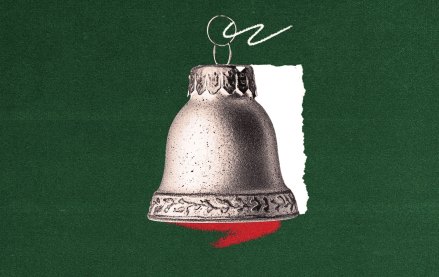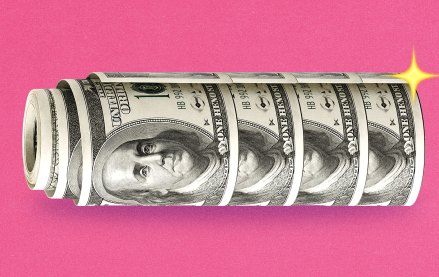Join us Dec. 1-3 in New Orleans for the Digiday Programmatic Marketing Summit

The creator class is splitting.
Some are sprinting into the future, using AI to produce, edit and post at a speed that would’ve been unthinkable even a year ago. Others are digging deeper into what makes them human — voice, vulnerability and imperfection.
For now, both are probably right.
But the split is getting sharper. The recent arrivals of Meta’s Vibes tab and OpenAI’s Sora app are the reason. Meta because it’s building a scrollable stream of AI-created video. OpenAI for taking that one step further, making it possible for anyone to generate AI video on demand, no camera required. Together, they’ve condensed every hope, fear and argument about AI’s role in creativity into two infinite scrolls. And in doing so, they’ve carved a clear line through the debate.
According to the creators speaking to Thobey Campion, founder of Lore Machine, this moment is less an existential threat and more a creative reckoning. “The next bit is going to be a bumpy ride for many of them. But it’s also an opportunity for them to stop and think about how they thoughtfully employ these tools, with demarcation, copyright, and originality, he continued.
Others are less optimistic.
“To be honest, many creators aren’t thrilled about Sora,” said Leslie Morgan, owner of digital agency and consultancy Every Problem Solved. “I’ve also had conversations with creators deeply embedded in AI, like Taryn Southern, who are expressing real concern. It’s one thing to use AI as a tool to enhance creativity, and it’s another when it starts eroding our ability to discern what’s real, what’s historically accurate, or what’s civically responsible.”
That tension over whether AI fuels slop or substance is redefining how creators see themselves.
“Creators are really starting to splinter into whether they are adopting it or rejecting it, depending on their background and how they’ve built their platform,” said Becky Owen, CMO of Billion Dollar Boy.
The divide came into sharp focus at a recent event in London hosted by the creator agency.
On one side of the conversation was Danae Mercer, the journalist-turned-creator who’s built a following of more than 2.2 million on Instagram by celebrating honesty and vulnerability.
On the other was Omar Karim, a creator and AI image maker pushing the boundaries of what “authorship” even means.
The irony is that both creators are responding to the same instinct: giving their audiences what they come for. Mercer’s followers want her unfiltered perspective, not a synthetic version of it. Karim’s fans, meanwhile, crave the surreal, fantastical — stories only possible because of AI.
It’s not hard to see how OpenAI’s Sora, and to a lesser extent Meta’s Vibes, could accelerate that split. Not overnight, of course. After all, it’s still unclear how close either platform is to defining the next phase of social media. But even now, it’s hard to imagine they’re far from it — a future where creators will have to choose whether they’re building new worlds or staying grounded in their own.
In some ways, that’s just a hyperextension of what creators already do: turning identity into craft, and craft into currency. They did it in the early days of YouTube, again through the rise of Instagram and then TikTok. The difference now is that so much of that craft has been hard-won, built sweat, skill and lived experience. To many, these tools, more than AI itself, threaten to cheapen that.
“AI should empower creators to create better, it allows them to be faster, smarter, more efficient in their creations,” said Morgan. “Sora feels less like that and more like a social media construct built for how to go viral and lacking integrity. It’s turning creation into memes.”
Or, as the current discourse goes, into AI slop — low quality, mass-produced content generated by AI.
“We’re always on the cusp of a new era for creators and brand social,” said Greg Swan, a senior partner at independent marketing agency FINN Partners. “But if we continue to see AI slop hitting mainstream feeds, I think the next era is going to swing back into community and offer tangible value for a follower or subscribe.”
Fault lines
None of this is fixed. Most creators are still figuring out where they stand in this moment, torn between curiosity and caution. But the hesitation has limits. These creations are already reaching out to those who are using Sora and other AI tools, said Jamie Gutfreund, founder of consultancy Creative Vision.
“The learners are the most interesting because they’re not going it alone, they’re seeking out creators who already understand both the tools and the craft,” said Gutfreund. “Many of these experts come from advertising backgrounds and have deep experience in industries like beauty, lifestyle, travel, or food. They understand the fundamentals of what makes content successful, and they’re using AI tools like Sora to build on that foundation.”
What’s unfolding isn’t a clash so much as a recalibration. AI is reshaping what it means to create — not in one direction but along a widening spectrum. For every creator who sees tools like Sora as a breakthrough, a way to turn imagination into cinematic expression, another sees them as the moment authenticity begins to fray.
The next era of the creator economy won’t hinge on access to technology but on the intent. Those who thrive will use these tools to deepen their voice, not dilute it, while those who chase efficiency for its own sake may find that automation doesn’t save time so much as flatten meaning. In the end, AI hasn’t divided the creator class — it’s revealed its fault lines: between makers who chase possibility and those who protect presence. Together, they’re shaping a future that’s neither utopian nor dystopian, just more complex, more crowded and unmistakably human.
“The short-term algo fuckery is real,” said Campion. “Noise is going to drown out the signal for a minute. But us humans happen to sport evolution’s most finely tuned bullshit detector. As AI becomes more convincing, our detectors adapt. Auto-generated content with no human inside will eventually be organ rejected; stories driven by real humans, some of which will use generative tech thoughtfully, will flourish. The media companies and creators who stick to their guns will be a refuge from the numbness-inducing hellscape of half-baked slop.”
More in Marketing

The chance to win the holiday marketing season has already come and gone, per Traackr’s holiday report
The influencer marketing platform tracked the top brands according to VIT, Traackr’s proprietary metric for visibility, impact and trust.

The EU’s Digital Omnibus offers relief for ad tech, but hands more power to Big Tech and AI agents
What it means for GDPR, ad tech and the online media industry as a whole.

Future of Marketing Briefing: Bold call – the legacy influencer agency doesn’t fit the new market
The influencer shops that once drew investor enthusiasm are now ceding ground to tools that promise scale, predictability and a cleaner margin story.








